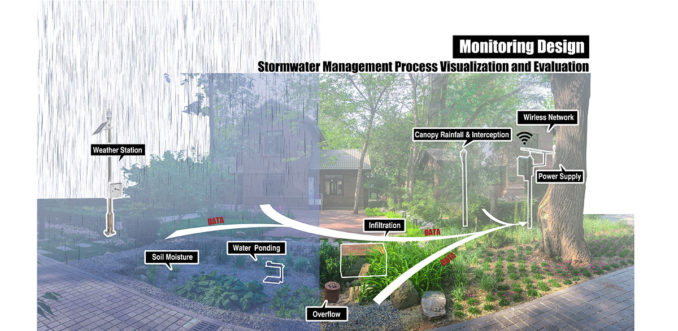
Research Overview
Monitoring analysis of stormwater management in landscape projects is much more accurate than hydrological calculations or simulations. For performance evaluation, high-precision data is needed but hard to come by.
Aiming to find out how much runoff can be reduced by canopy trees, lawn, and bioretention basins with different levels of precipitation, this research uses a wireless sensor network(WSN) to visualize the whole rainfall process of a closed-watershed site named Shengyinyuan in Tsinghua University.
This study provides a set of monitoring indicators and methods for rainwater management which has great potential for more applications in landscape projects and can help landscape architects to evaluate post occupancy.
In the 28 rainfall events monitored in the site, canopy trees contributed nearly 21.7% of the interception, and 4 bioretention basins achieved obvious runoff reduction (nearly 15.5% runoff collected by 2% area) especially in continuous, large and short, high-intensity rainfall events. Several important results indicated further design improvement in this site.
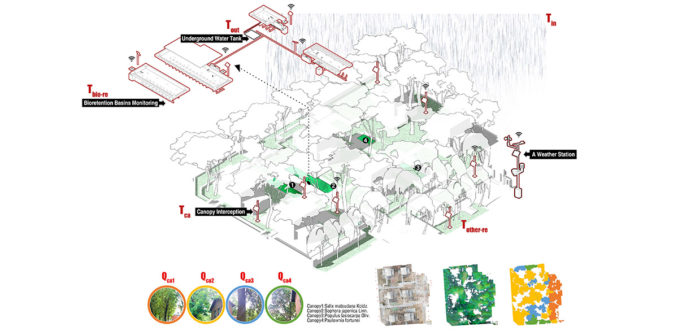
Monitoring Site & IoT System
The monitoring site Shengyinyuan is a campus green space which can be seen as an endorheic basin (58848sf). 62% of the site is covered by 4 kinds of canopy trees. Due to the serious waterlogging problems after rainfall events, 4 bioretention gardens were designed to reduce surface runoff.
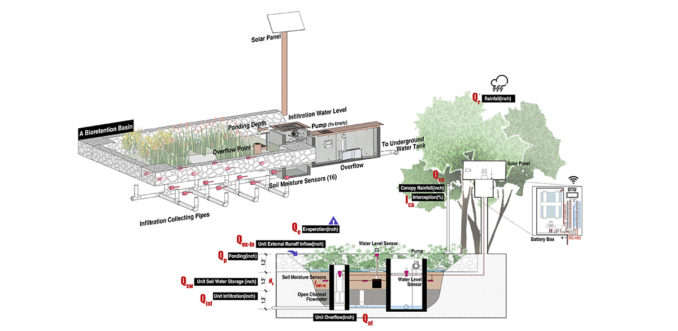
There is an obvious pattern of stormwater management in this site: rainfall—canopy interception—multiple surfaces runoff—bioretention basins reduction—overflow to water tank. Different sensors are used to monitor the flow reduction of all these stages except runoff generation of multiple surfaces which is hard to measure.
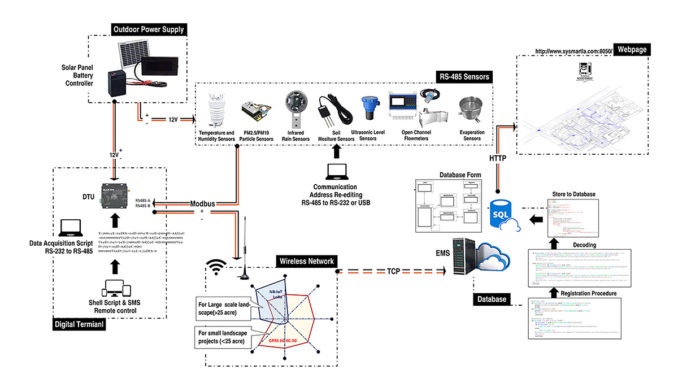
All the sensors are powered by outdoor solar panels and battery. Data is actively collected by Data Transfer unit(DTU)after script programming and sent to a cloud server via LTE 4G network. Then the data is decoded and stored in the database.
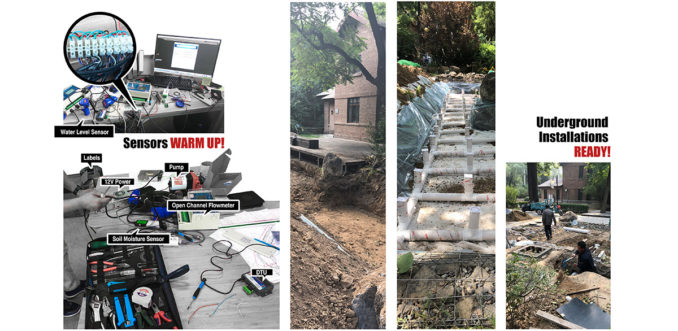
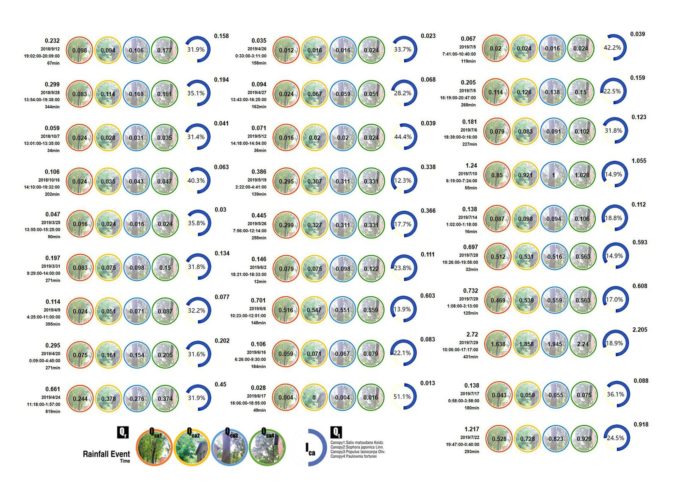
Canopy Interception
Canopy trees affect the spatial and temporal distribution of different rainfall events on the site evidently.In the 28 rainfall events monitored, total canopy interception ratio is 21.7%, holding nearly 75300 gals of runoff. It is generally believed that the canopy interception rate has a logarithmic relationship with the precipitation. The trend of the data collected in Shengyinyuan basically conforms to this established conclusion. Further analysis found that the canopy interception rate and the maximum rainfall rate show a significant logarithm correlation with higher fit degree.
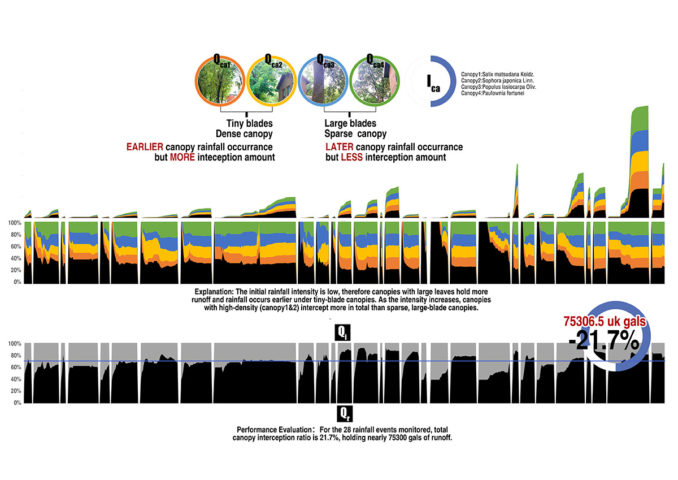
Rain Gardens Runoff Reduction
The area of 4 rain gardens is 1288.4sf (2% of the site). In the 28 rainfall events, the total inflow of the site is 347450 gals, 15.5% of which is collected by the 4 bioretention basins (8.1% by infiltration and 7.4% by soil layer). Rain gardens has played a significant role in reducing external runoff and the soil shows good water retention performance (Figure 8, a).Through further analysis, it is found that the logarithm relationship between the runoff reduction ratio of rain gardens the average rainfall intensity is evident (Figure 8, b).
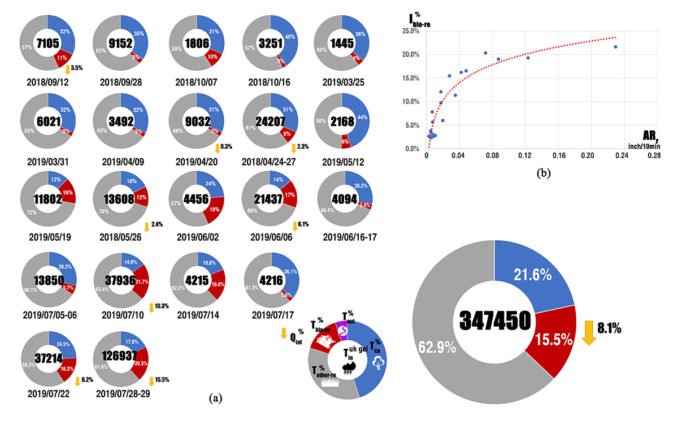
High-precision monitoring data makes it possible to intensively visualize the whole rainfall process. Taking a continuous rainfall event (April 24-27) as an example to demonstrate the dynamic changing process of soil water storage and infiltration of the rain gardens.

Compare the runoff reduction of 4 rain gardens (No. 1-4) and access the rationality of the site selection and capacity design: the monitoring data reflects an obvious difference in runoff response. Under different rainfall conditions, bioretention basin No. 2 always collected a large amount of external runoff effectively. Larger amounts of outside runoff are reduced by basin No. 4 during rainfall events with high intensity.
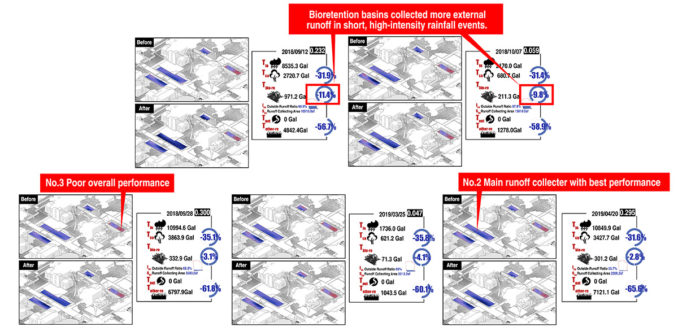
Major innovations·
A set of monitoring indicators and methods for stormwater management are provided which have great potential for more applications in landscape architecture, encouraging landscape architects to design for monitoring in early stages of different projects.·Images of rainfall process restoration are good materials for landscape and hydrology education. More and more materials will be updated as the system operates continually.·Accuracy is improved, monitoring period is lengthened, and maintenance costs are reduced with the methods of online monitoring.
Faculty Advisor: Hailong Liu.
Project Credits: Huaiyu Zhou, Tsinghua University.
Location: Beijing, China.
